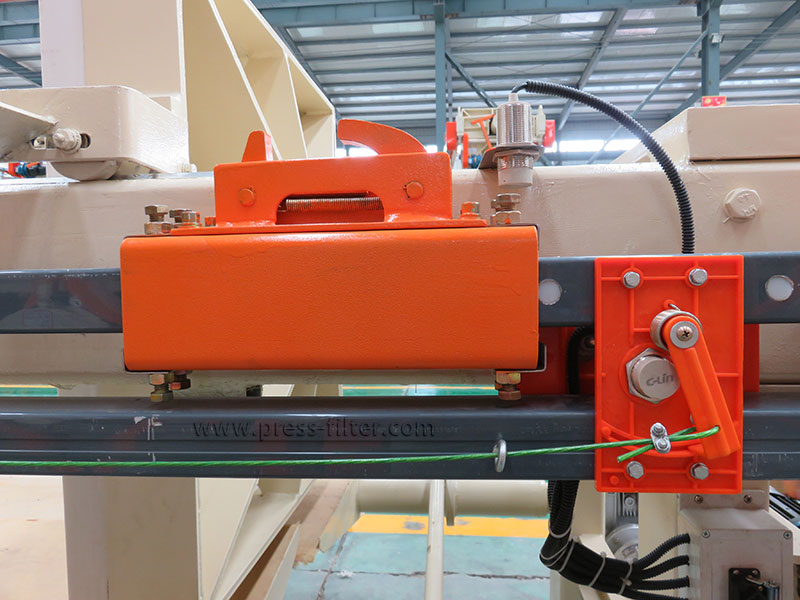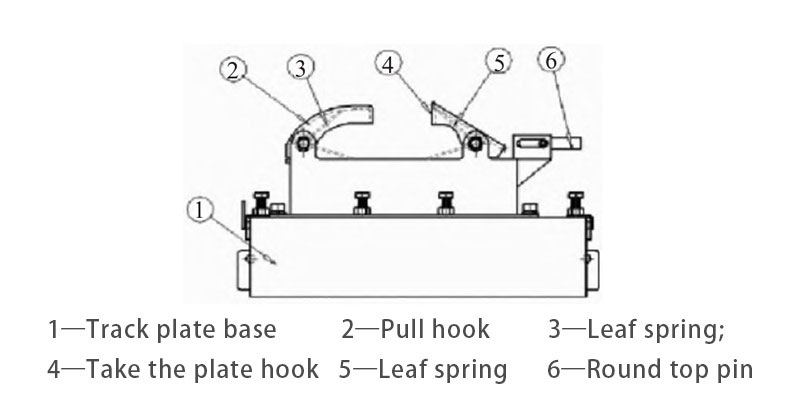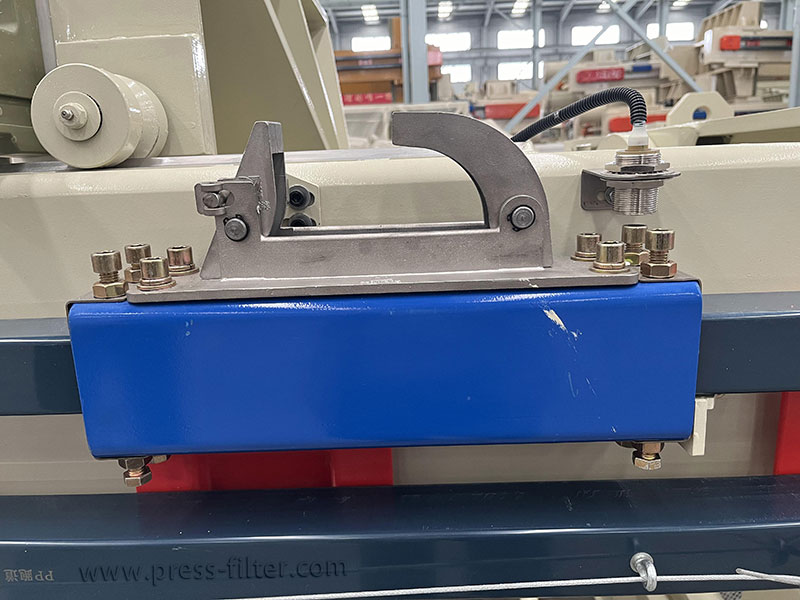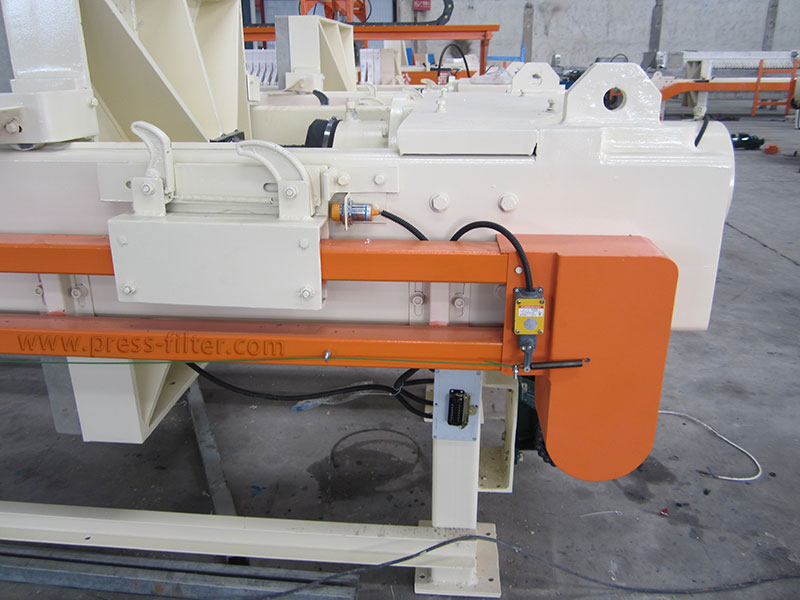How to Adjust the Filter Press Plate Shifter
The plate shifter is also called a plate-pulling device. It is an indispensable and important component of the filter press and is mainly composed of a hydraulic motor, a manipulator, a transmission mechanism, and a suspension device. The plate shifter is installed on the tracks on both sides of the main beam of the filter press and is used to gradually pull the filter plate apart and remove the filter cake in the middle of the filter plate. It can improve equipment efficiency and reduce labor costs.

Working Principle of the Automatic Plate Shifter
The working principle of the pull plate device is that the piston in the hydraulic pump drives the pull plate device to perform tightening activities under the push of the oil cylinder. Through this tightening activity, the thrust plate is squeezed, and the thrust plate remains fixed, thereby exerting the effect of squeezing the mud material and effectively squeezing the filter cloth.

Methods for Adjusting the Plate Shifter of the Filter Press
- Check the power source of the plate shifter, such as the engine or electric drive, to ensure that it operates properly and provides sufficient power.
- Check the plate shifter’s wheel bearings and transmission system to make sure they don’t have excessive friction or resistance. Cleaning and lubricating these parts can improve the ride.
- Check the status of the filter media. If the filter media is too clogged or damaged, it will increase the resistance of the trolley and the filter media needs to be cleaned or replaced.
- Check the liquid supply system to ensure that the liquid flow is sufficient and unobstructed. The filter press needs to handle liquid when working. If the liquid flow is insufficient, it will affect the speed of the plate shifter.
- Check the structure and parts of the plate puller to make sure they are not damaged or loose. If so, any problematic parts need to be repaired or replaced in time.
- Plate shifter speed can be achieved by adjusting the frequency converter in the filter press control cabinet. The normal plate-pulling frequency is 34-36, but it also needs to be adjusted to an appropriate value according to the filter press product itself.

Common Faults and Solutions of Filter Plate Shifter
The Plate Shifter Does Not Move
When the movable plate displacement detection system of the filter press is not working properly, or there is a large error in the sensor installation position, it will not be able to detect that the filter plate is in place, causing the plate shifter to not move; an open circuit in the control solenoid valve will also cause the shifter to not move. ;
Treatment method: If the in-position detection device fails, replace it in time and adjust its position appropriately; conduct a comprehensive inspection of the solenoid valve control circuit and repair it in time if any open circuit is found.
Reverse Movement is Not in Place
Reverse movement is accomplished by pressure detection. If the installation between the plate puller and the track is too tight, it will cause excessive pressure. Once the pressure exceeds the preset pressure, it will cause the car to reverse movement in advance.
Treatment method: Loosen the fastening screws in time to ensure that the pressing force between the plate puller and the track is in a reasonable state.
The Trolley is Out of Sync
If the chain becomes loose during operation and the chain is not tightened in time, it will cause the filter plate shifter to accumulate chain links after running for a period of time, resulting in resynchronization.
Treatment method: Use wooden blocks to cushion the chain according to the position of the machine head measuring sprocket.
Broken Fastening Bolts
The plate-pulling trolley will generate impact force during the process of unloading the plate. When the impact force is too large and frequently acts on the bolts, it will cause fatigue fracture of the bolts.
Treatment method: Replace new bolts, adjust the operation process of the plate shifter, and stop the shifter appropriately when unloading so as to reduce the impact force and extend the service life of the bolts.


